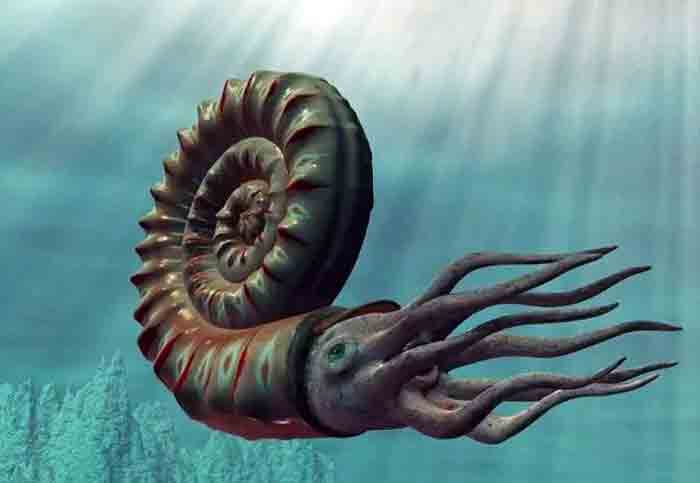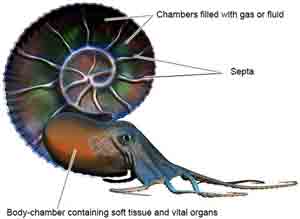Ammonite Fossil Seashell cm 61 x 46 x 16 gr 56.5 Beudanticeras newtoni Extinct Prehistoric Molluscs Cephalopods Mesozoic Cretaceous Collecting Paleontology Museum.
Pleasant fossil specimen with Nacre of Ammonite Desmoceratidae from the lower Cretaceous, representative collectible find of best quality, with clear anterior and posterior details of ornamental ribs well preserved. The iridescent Nacreous layer, in perfect state of conservation, is still visible.
No restored at all. Only a piece, as in photos.
Beudanticeras is an extinct genus of Cephalopods from the Cretaceous period (Albian-Cenomanian), belonging to the subclass of Ammonoids and included in the Desmoceratidae family.

Beudanticeras has a compressed, moderately involuted shell with convex to flat sides and a narrowly arched edge. The coiling is such that the outer spiral encompasses much of the subsequent inner spiral, leaving a small spiral navel. The shell is generally smooth but may have weak ribs but no tubercles. The suture is ammonitic. The derivation of Beudanticeras may be from Uhligella, although this genus is partly contemporary with the early Beudanticeras. Other related genera include Beudantiella, Brewericeras, Zurcherella and possibly Pseudosaynella. Beudanticeras fossils have been found across much of the planet.
The
Ammonites are an extinct group of Cephalopods, which appeared in the Lower Devonian about 400 million years ago and extinguished at the end of the Cretaceous, together with the Dinosaurs (65 million years ago), leaving no known descendants.

Like all cephalopods known this organisms were carnivorous: active predators of marine animals, microphagous (plankton), scavengers, and even cannibals. The shell of ammonites in general has the form of a
spiral wound on a plan (although some species, such
heteromorphy, have a more complex three-dimensional winding) and it is this feature that has given their name. The appearance infact resembles a
coiled horn, like that of a ram (the Egyptian god
Amon was commonly depicted as a man with ram's horns). Pliny the Elder described the fossils of these animals ammonis cornua, "horns of Ammon." Often the name of the species of Ammonites ends with -ceras, from a greek word (κÎρας) whose meaning is, in fact,
"horn" (eg. Pleuroceras etymologically means horn with the coast).
The shell was divided by
septa into several rooms, including the clam occupied only the last. The others were used as
"air chambers" filled with gas and liquid to control the
floating body. The ammonite could well change its depth in a manner similar to the current
Nautilus.
Because of their extraordinary variability and distribution in marine sediments around the world the ammonites are considered fossils for excellence and
guide-fossils of exceptional value, used for dating in stratigraphy of the sedimentary rocks.
The classification of ammonites is made on the basis of morphology and
ornamentation of the shell, and the shape of septa, depending on the
suture line.


